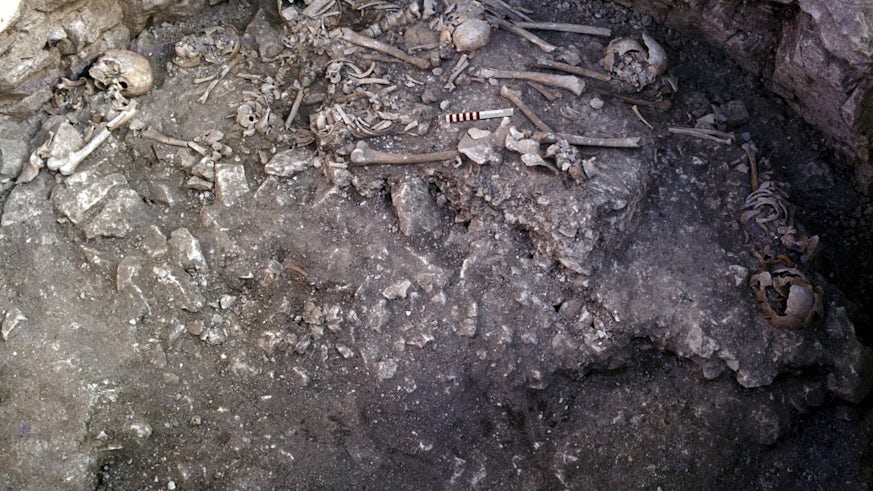Macabre variety of Iron Age burial practices
2 March 2016

Research reveals the diverse and unusual ways dead people were treated more than 2,000 years ago
Unusual and macabre burial practices used by Iron Age Britons have been discovered by researchers from the Natural History Museum and Cardiff University.
Rather than the accepted majority practice of ‘sky burial’ or excarnation, the researchers found that more than 2,000 years ago, Britons employed three distinct rites for their dead:
- exhumation (initial burial with exhumation years later)
- partial exposure (in pits, followed by retrieval of decomposing body parts)
- excarnation (full exposure to the elements resulting in the defleshing of the body)
The Arts and Humanities Research Council funded project involved novel microscopic analysis of human bones from two Iron Age sites in central-southern Britain – Danebury, the most extensively excavated hillfort in Britain, and its Hampshire neighbour Suddern Farm.
Lecturer in Archaeological Science at Cardiff University’s School of History, Archaeology and Religion Dr Richard Madgwick said: “Human bones are scarce in the Iron Age archaeological record and what Iron Age Britons did with their dead remains one of the great archaeological conundrums. Remains that are recovered tend to come from grain storage pits on settlements and are often in unusual configurations, including detached limbs, isolated fragments and skulls. Excarnation has become the dominant explanation for the treatment of the dead, as this would cause the disarticulation and ultimately the destruction of remains.
“Our research reveals a much more complex picture, macabre to modern Western culture. Some bodies were buried and years later exhumed, with certain bones removed, perhaps as ancestral relics. Other bodies were deposited in deep pits that may have been covered, and were returned to for the selection of decomposing parts, which were then deposited elsewhere. One individual was left exposed to the elements, but this may not have been the way that the majority of people were treated,” concluded Dr Madgwick.
Dr Tom Booth, who worked on the project whilst at the University of Sheffield and is now at the Natural History Museum, said: “This novel technique using thin section light microscopy can reveal otherwise-hidden dimensions of funerary treatment, helping us to better understand the lost rituals and beliefs of ancient British people. The early bacterial activity which drives the decay of the body also drives the internal decay of the bone. Preserved within every archaeological bone is a record of early bodily decomposition that gives us an unprecedented insight into the treatment of the body in the days and months following death.”
Contrary to opinion that excarnation (or exposure) was the majority funerary rite for people in Iron Age Britain, researchers found most remains were either part exposed in deep grain storage pits, or exhumed years after death. Only one example of excarnation was identified.
The paper - New evidence for diverse secondary burial practices in Iron Age Britain - is available in the March 2016 edition of Journal of Archaeological Science.